Bolsa Chica Ecological Reserve is located next to Huntington Beach, California and is across the street from the Pacific Ocean (Bolsa Pica State Beach), with the Pacific Coast Highway as the intermediary. It is operated by the California Department of Fish and Wildlife to protect threatened and endangered species of wildlife and wildflowers. It contains 1,300 acres of wetlands and is the
largest saltwater marsh along the coast of California.
It includes water, mudflats, salt marsh, coastal dunes, seabird nesting islands, riparian and freshwater marsh. It is bordered on the north by Warner Avenue, on the south by Seapointe Avenue, on the west by the PCH and on the east by a residential neighborhood.
I visited on Saturday, January 17, parking in a small parking lot on Seapointe Avenue, arriving shortly before sunrise. The place is a gem. Following are some of my photos.
 |
One of my most exciting sightings were some brant geese that I saw first thing. I knew they were a bird I'd never seen and asked a person nearby what they were. |
 |
| Another fun find were numerous buffleheads, the first time I've seen an abundance of them. One challenge in photographing them is that they are constantly diving. |
 |
| I have a new camera (Canon EOS 5D Mark IV) and lens (Canon 100-400 mm f/4.5) that I'm just starting to use and get used to. I was previously using a Canon EOS Rebel t3i camera and Tamron 150-600 mm lens. The change was a little disconcerting at first because the images from my new lens are so small. But they crop amazingly well. Look at the beads of water on the back of the bufflehead! My Tamron does not provide that kind of picture quality. |
 |
| At one point the water in the lagoon just lit up with rushing animals making waves and I had no idea what was going on. I had my camera setting on rapid fire and focused on the activity and let it fire while the activity was going on. I figured that there was probably a school of fish in the lagoon and something like cormorants chasing them. |
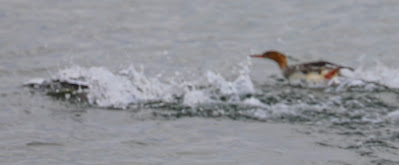 |
| Ironically, I'd gone to Bolsa Chica because I wanted to see red-breasted mergansers and iNaturalist had a number of red-breasted merganser sightings there in the last few weeks. I went home thinking I'd been a failure in that regard. Then as I started cropping my photos I realized that this frenzied water chase was a bunch of red-breasted mergansers in a courtship display and I ended up with some amazing photos! The trip was a great success! |
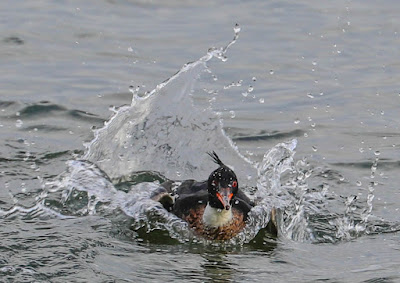 |
| The splashing water helps convey some of the speed that was displayed as this male chased a female. |
 |
| This display was not just one male and female. There were three or four of each sex chasing and being chased at the same time, I think part of the reason that I never really got a realistic view of what was going on. The chase continued on down the length of the lagoon and I did not follow them. |
 |
| When I first arrived I asked an older man with a large lens pushed in a cart if he knew where I should look for the mergansers. He identified the lagoon in front of us. Then I asked him if he was looking for anything in particular. He said that he loved watching reddish egrets. I found this reddish egret later in the day, a first for me in California (I've seen them in Texas and Florida). |
 |
| I thought this was an eared grebe and learned when I got home that it is a horned grebe, another species I've not seen before. |
 |
| A greater scaup. Again, I love the photo quality. The best way to distinguish a greater scaup from a lesser scaup is that a greater scaup has a green sheen on the head in good light and the lesser scaup has a purple sheen on the head. |
 |
| Note the purple sheen on this lesser scaup. |
 |
| I saw both white and brown pelicans. These American white pelicans were in a marsh back behind the front lagoons. |
 |
| I saw these brown pelicans flying in just as I was leaving. |
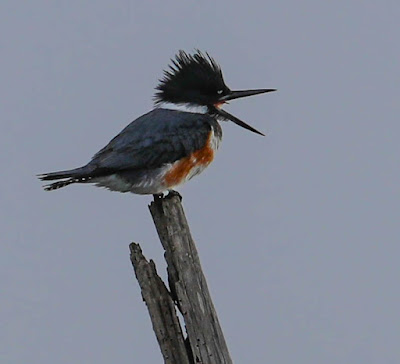 |
| This belted kingfisher was at the edge of the back marsh, flying between several trees that were its lookout posts. |
 |
| I saw my first American wigeons just a week or so before. Here a female and male. |
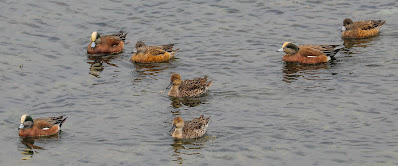 |
| Two female northern pintails, center, with some American wigeons. |
 |
| A California towhee on the trail high above the northern lagoon. |
 |
| Canada geese came flying into the back marsh, honking away. |
 |
| A common loon, only the second one I've seen. The first was on a lake in the Bruce Peninsula of Ontario, Canada. |
 |
| Double-crested cormorants. |
 |
| The great-blue herons of Bolsa Chica like to stand in trees. |
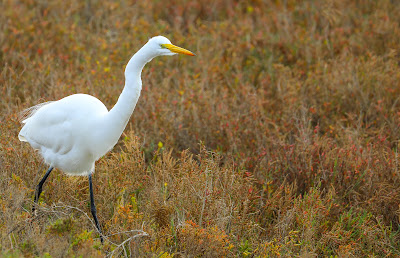 |
| But the great egrets stayed on the ground. |
 |
| Red-tailed hawk |
 |
| House finch: they are somewhere other than our backyard bird feeder. |
 |
| Smithsonian magazine just had an article on the marbled godwit, a very long distance traveler. Only the second time I've seen one. |
 |
| Mourning doves, a bird we share with the coastal cities. |
 |
| Best views I've ever gotten of a northern harrier. |
 |
| Northern pintails |
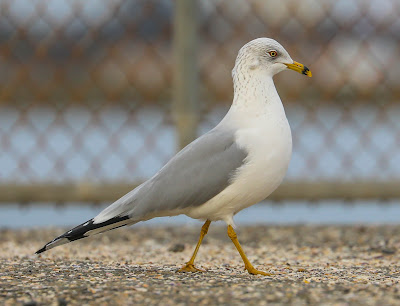 |
| Ring-billed gull |
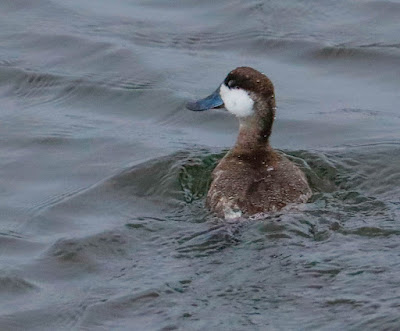 |
| Ruddy ducks |
 |
| Surf scoter, a sea duck, and a first for me. |
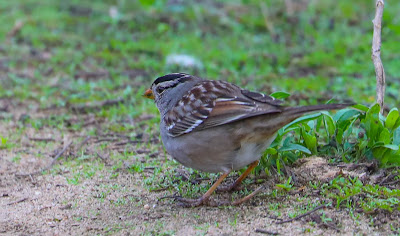 |
| White-crowned sparrow from the trail on the bluff above the northern lagoon. |
 |
| Willets |
 |
| A common bird, but one of my favorites: the snowy egret. |











































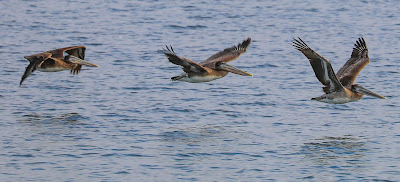






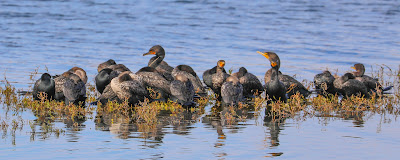










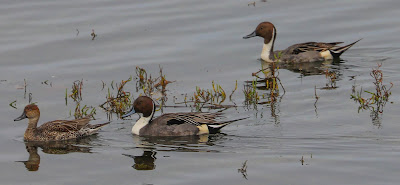






Wow, you have a lot of amazing photos. Many of them are among your best photos. I especially like the hunched over reddish egret about 1/3 the way through. The northern harrier photos are also great.
ReplyDelete